Discover the untouched beauty of Saudi Arabia’s diverse ecosystems. Saudi Arabia, a land often associated with vast deserts and rich oil reserves, is also home to a surprising array of natural landscapes that are waiting to be explored. From lush mountains and pristine beaches to rugged canyons and diverse wildlife habitats, the Kingdom’s national parks and nature reserves offer a unique opportunity for nature enthusiasts and adventure seekers alike. This guide will introduce you to some of the most remarkable national parks and nature reserves in Saudi Arabia, providing insights into what makes each one special and how you can make the most of your visit.
Asir National Park: A Mountainous Haven
Experience the cool climate and verdant landscapes of Asir National Park.
- Location: Southwestern Saudi Arabia, near the city of Abha
- Established: 1980
- Highlights:
- Jabal Sawda: The highest peak in Saudi Arabia, approximately 3,000 meters above sea level.
- Biodiversity: Home to juniper forests, wildflowers, and rare wildlife like the Arabian leopard (though sightings are extremely rare).
- Cultural Villages: Visit traditional villages such as Rijal Almaa, known for their unique architecture and heritage.
Activities:
- Hiking and Trekking: Explore numerous trails that cater to different skill levels.
- Bird Watching: The park is a haven for bird species, including eagles and vultures.
- Camping and Picnicking: Designated areas offer facilities for overnight stays and day trips.
Tips:
- Best Time to Visit: Between April and October when the weather is mild.
- Accommodation: Options range from hotels in Abha to camping sites within the park.
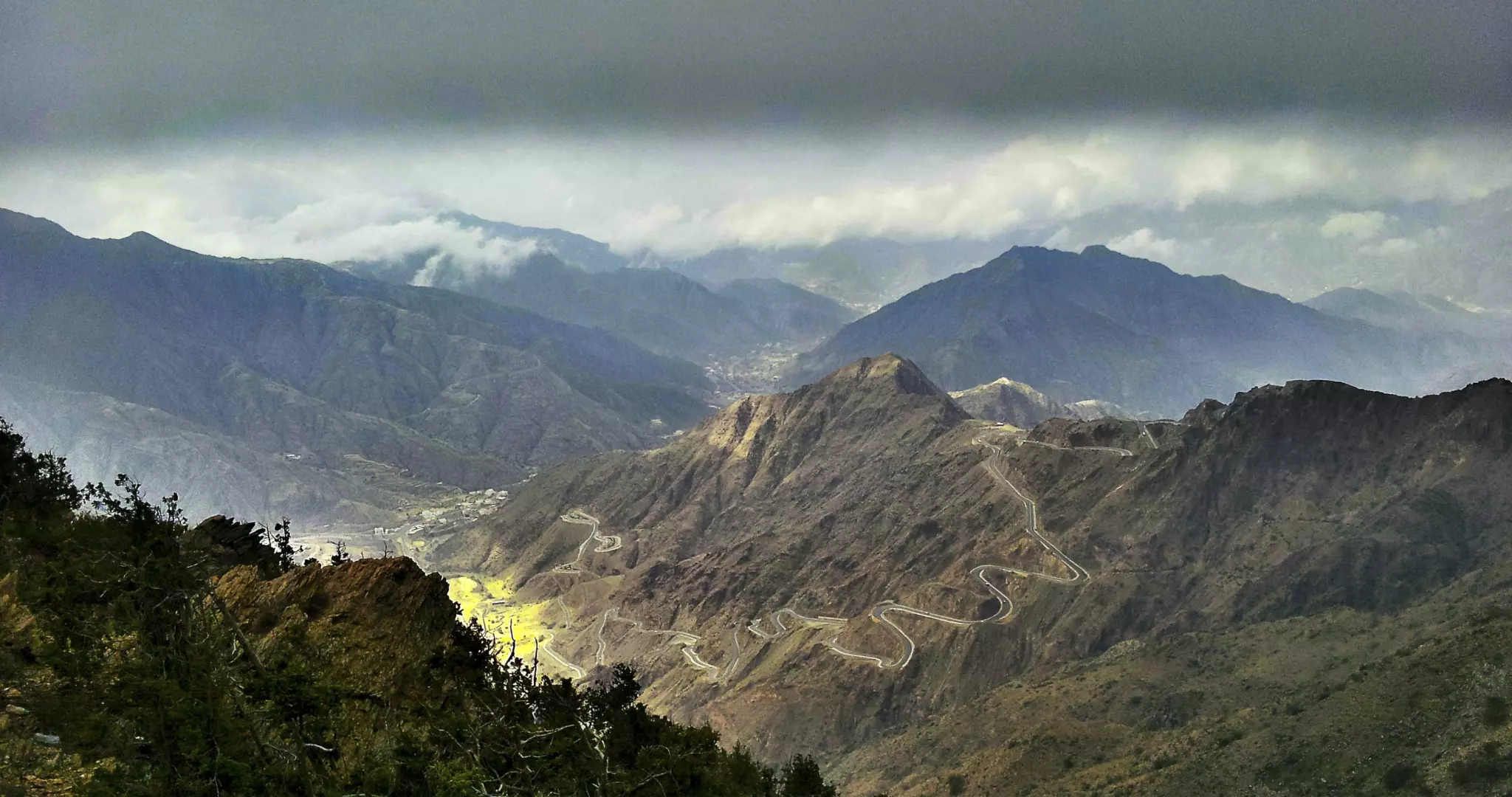
Farasan Islands Marine Sanctuary: An Archipelago of Wonders
Dive into crystal-clear waters teeming with marine life at the Farasan Islands.
- Location: Red Sea, southwest of Jizan
- Established: in 1996 as a protected area
- Highlights:
- Coral Reefs: Rich marine biodiversity, making it a paradise for snorkelers and divers.
- Wildlife: Home to the endangered Farasan gazelle and a variety of bird species.
- Cultural Sites: Ottoman-era buildings and ancient ruins dot the islands.
Activities:
- Snorkeling and Diving: Explore vibrant coral reefs and marine life.
- Boat Tours: Discover secluded beaches and uninhabited islands.
- Bird Watching: Spot migratory birds such as flamingos and ospreys.
Tips:
- Access: Ferry services are available from Jizan; schedules may vary, so check in advance.
- Accommodation: Limited options; consider staying in Jizan or arranging for local homestays.
.jpg)
Al Ahsa Oasis: A Cultural and Natural Marvel
Wander through the world’s largest oasis, a UNESCO World Heritage Site.
- Location: Eastern Province, near Hofuf
- UNESCO World Heritage Site: Inscribed in 2018
- Highlights:
- Palm Groves: Over 2.5 million date palms create a lush landscape.
- Natural Springs: More than 60 hot and cold springs are scattered throughout the oasis.
- Caves and Mountains: Al Qarah Mountain offers cave exploration and panoramic views.
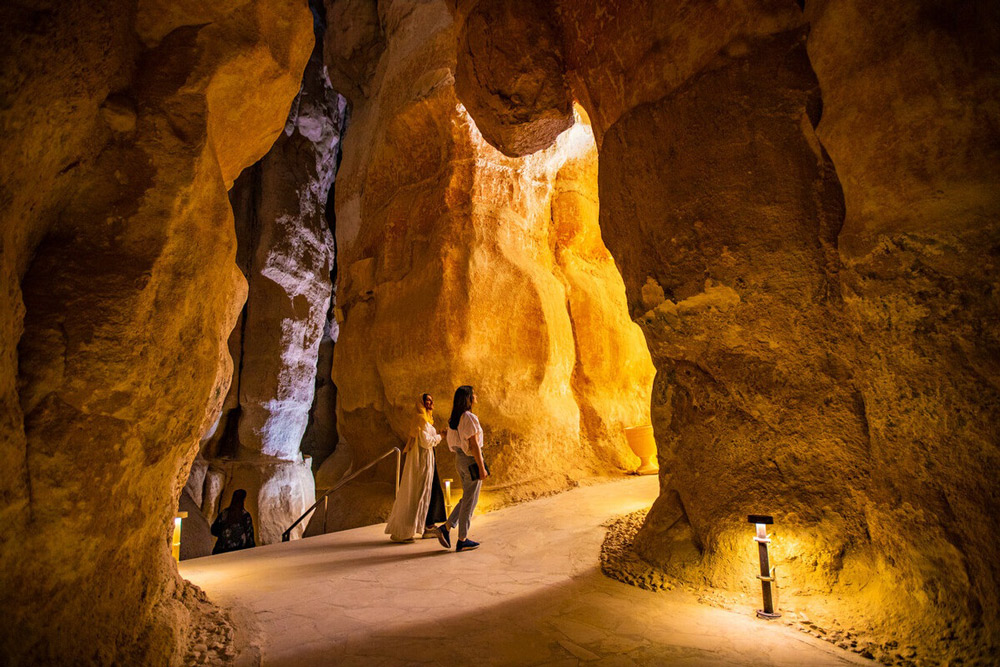
Activities:
- Cultural Tours: Visit historical sites like Jawatha Mosque and traditional markets.
- Nature Walks: Stroll through palm groves and along irrigation canals.
- Cave Exploration: Explore the cooled caves of Al Qarah Mountain.
Tips:
- Best Time to Visit: Cooler months from October to March.
- Guided Tours: Recommended to fully appreciate the cultural and historical significance.
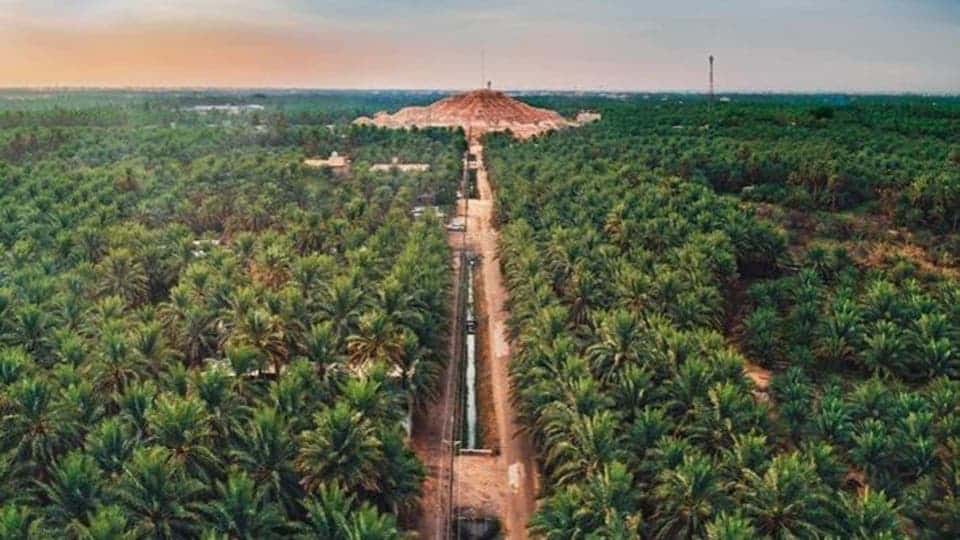
Uruq Bani Ma’arid: The Edge of the Empty Quarter
Experience the vast dunes and unique wildlife of the Rub’ al Khali desert.
- Location: Western edge of the Rub al Khali (Empty Quarter)
- Established: 1995
- Highlights:
- Sand Dunes: Some of the highest and most spectacular dunes in the world.
- Wildlife: Protected species like the Arabian oryx, sand gazelles, and the Arabian wolf.
- Conservation Efforts: Part of initiatives to reintroduce native species to their natural habitats.
Activities:
- Desert Safaris: Explore the dunes with experienced guides.
- Wildlife Observation: Specialized tours may offer glimpses of rare animals.
- Stargazing: The remote location provides clear night skies.
Tips:
- Permits Required: Access is restricted; obtain necessary permissions through authorized tour operators.
- Preparation: Due to harsh conditions, trips should be planned carefully with adequate supplies.
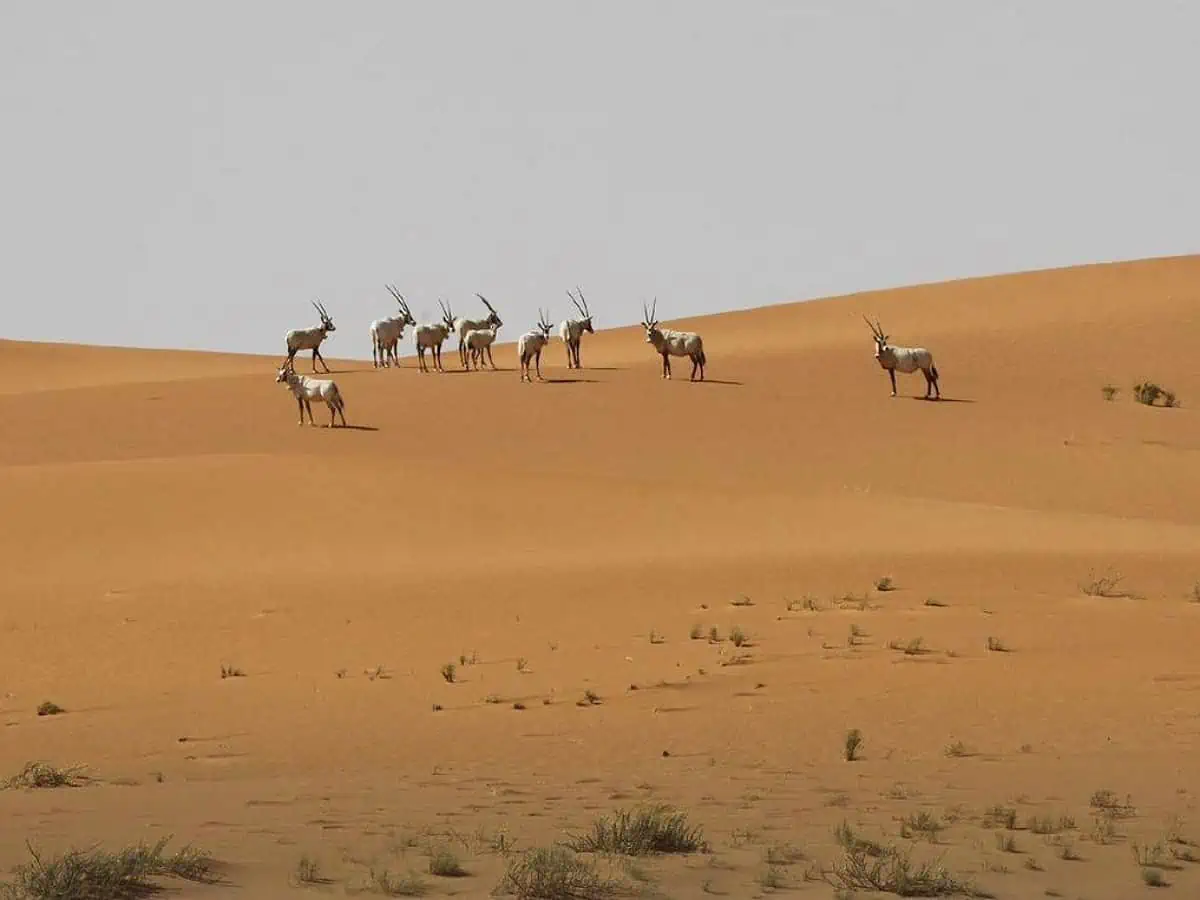
Edge of the World (Jebel Fihrayn): A Geological Wonder
Stand atop dramatic cliffs overlooking an endless horizon.
- Location: Northwest of Riyadh
- Highlights:
- Dramatic Cliffs: Sheer precipices that drop to the ancient ocean bed below.
- Fossils: Evidence of marine life from millions of years ago.
- Panoramic Views: Uninterrupted vistas of the surrounding desert.
Activities:
- Hiking: Trails leading to various viewpoints.
- Photography: Capture stunning landscapes, especially during sunrise and sunset.
- Picnicking: Enjoy meals with a view at designated spots.
Tips:
- Accessibility: A 4×4 vehicle is recommended due to rough terrain.
- Guided Tours: Enhance safety and provide valuable insights.
.jpg)
Harrat Al-Harrah Wildlife Sanctuary: Volcanic Landscapes
Explore the rugged beauty of Saudi Arabia’s largest reserve.
- Location: Northern Saudi Arabia, near the Jordanian border
- Established: 1987
- Highlights:
- Volcanic Terrain: Black basaltic rocks and dormant volcanic cones.
- Biodiversity: Habitat for Arabian wolves, sand cats, and various bird species.
- Cultural Heritage: Rock art and ancient inscriptions.
Activities:
- Wildlife Watching: Opportunities to observe rare desert animals.
- Geological Tours: Study unique volcanic formations.
- Cultural Exploration: Discover petroglyphs and archaeological sites.
Tips:
- Permits Required: Access may be restricted; coordinate with the Saudi Wildlife Authority.
- Preparation: Ensure adequate supplies and equipment for remote travel.
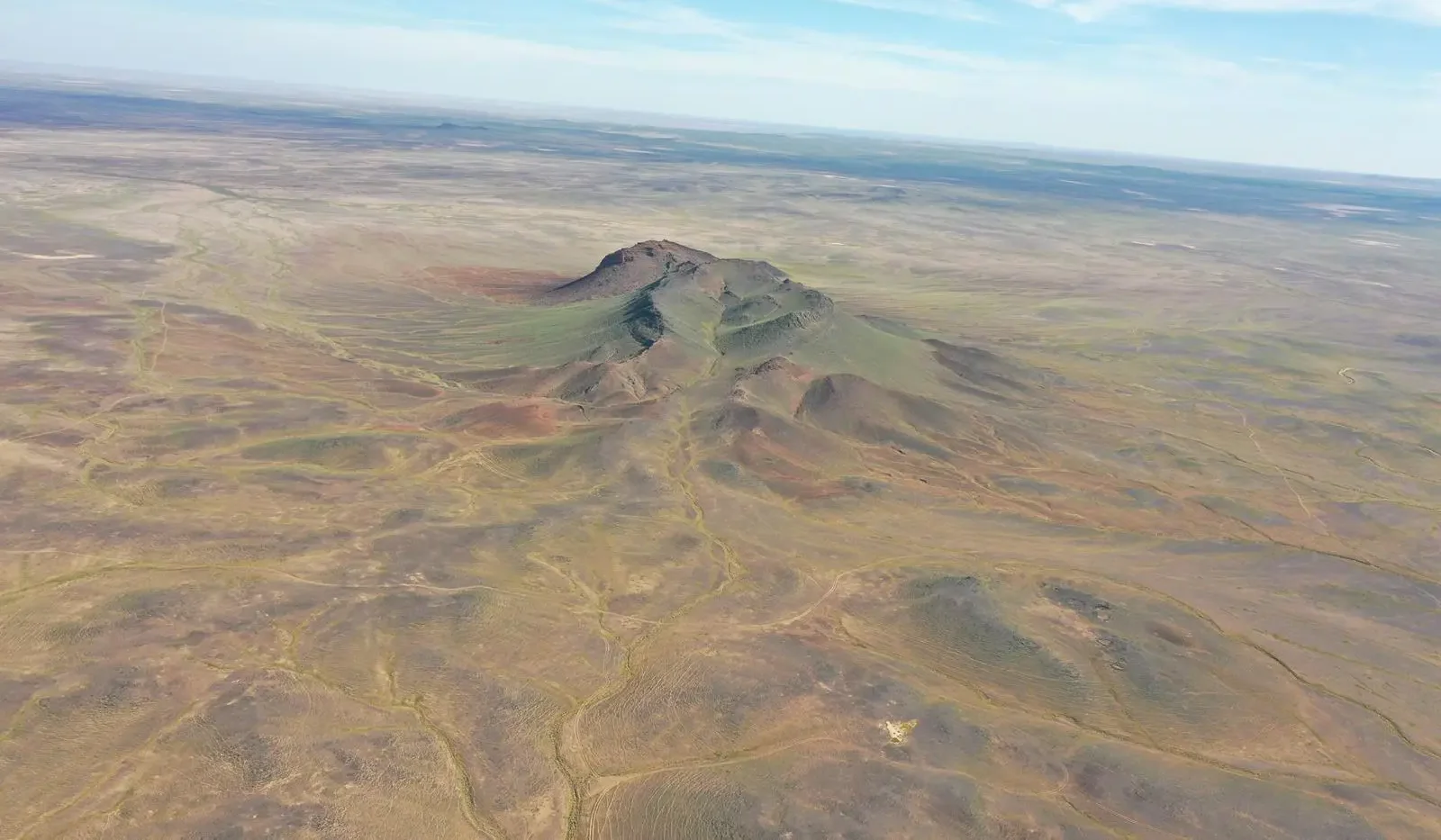
Al-Wahba Crater: A Geological Marvel
Discover the mysterious salt flat at the bottom of a massive volcanic crater.
- Location: Approximately 250 km northeast of Taif
- Highlights:
- Crater Dimensions: About 2 km in diameter and 250 meters deep.
- Salt Pan: A white salt flat covers the crater floor.
- Surrounding Trails: Encircled by lava fields and palm groves.
Activities:
- Hiking: Trek to the crater rim or descend to the bottom (challenging).
- Camping: Overnight stays offer spectacular views of the night sky.
- Photography: Unique landscapes ideal for photography enthusiasts.
Tips:
- Best Time to Visit: Cooler months; avoid midday heat.
- Safety: The descent is steep; proper footwear and caution are essential.
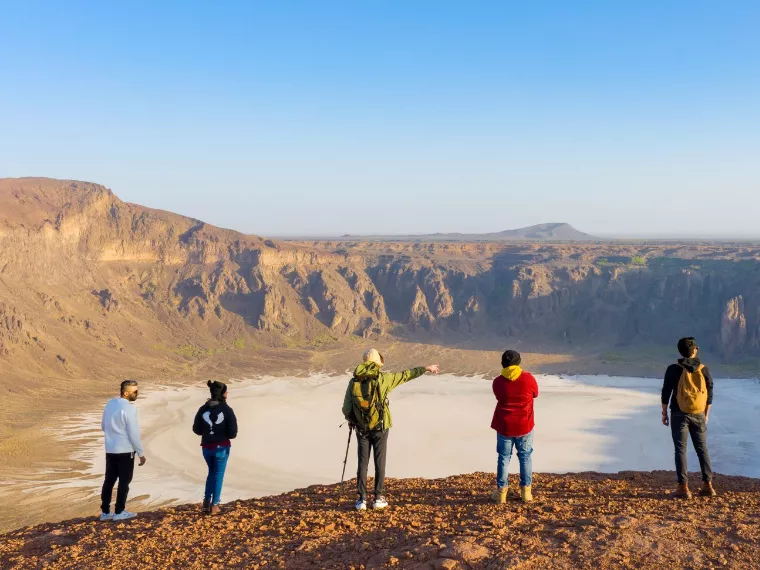
Wadi Al Disah: The Enchanting Valley
Explore a serene oasis surrounded by towering sandstone cliffs.
- Location: Tabuk Province, near the town of Disah
- Highlights:
- Lush Vegetation: Palm groves and flowing streams create a tranquil environment.
- Sandstone Pillars: Dramatic rock formations and cliffs.
- Cultural Sites: Ancient Nabatean tombs and rock carvings.
Activities:
- Hiking and Trekking: Explore the valley floor and side canyons.
- 4×4 Tours: Navigate through the wadi’s terrain with local guides.
- Picnicking: Enjoy the natural surroundings in designated areas.
Tips:
- Access: A 4×4 vehicle is necessary; roads can be rough.
- Local Guides: Enhance your experience with knowledgeable guides.
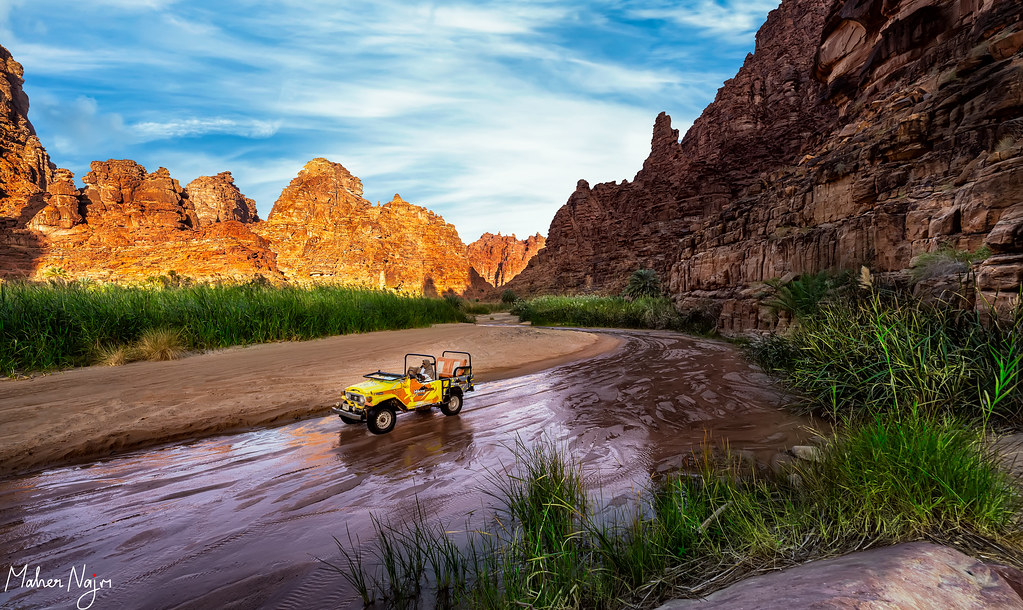
King Abdulaziz Royal Reserve: Protecting Biodiversity
Witness conservation efforts in one of the Kingdom’s largest protected areas.
- Location: Extends across parts of Riyadh, Hail, and Al-Qassim provinces
- Established: 2018
- Highlights:
- Wildlife: Sanctuary for species like the Arabian oryx, bustards, and gazelles.
- Flora: Diverse plant life adapted to desert conditions.
- Research and Conservation: Ongoing projects to restore and protect ecosystems.
Activities:
- Wildlife Safaris: Organized tours may offer sightings of native animals.
- Educational Programs: Learn about conservation initiatives.
- Cultural Engagement: Opportunities to understand the relationship between local communities and the environment.
Tips:
- Permits Required: Access is regulated; coordinate with reserve authorities.
- Respect Guidelines: Follow all rules to minimize human impact.
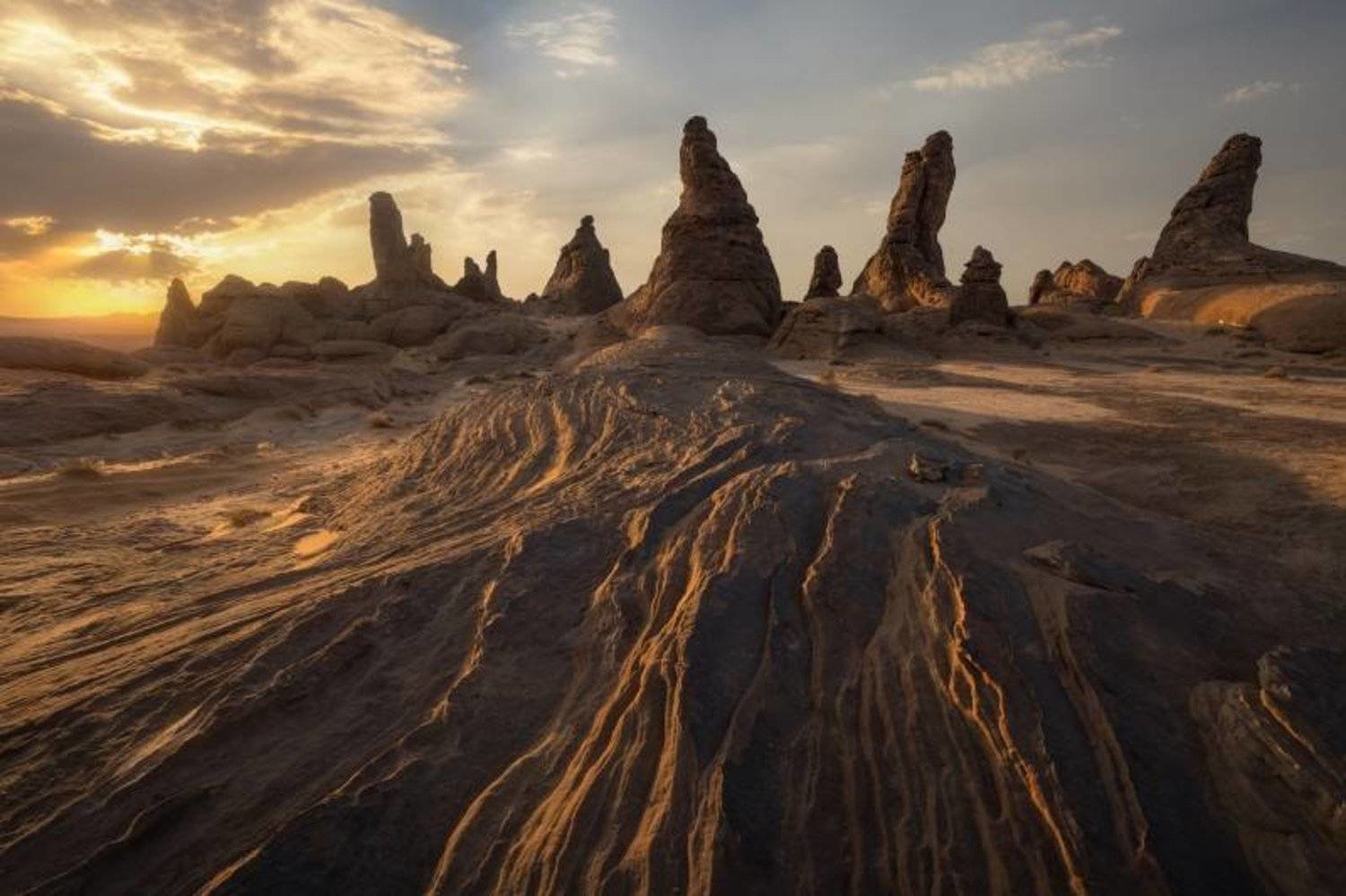
Practical Information for Visitors
Permits and Regulations
- Access Restrictions: Some parks and reserves require permits or can only be visited with authorized guides.
- Conservation Laws: Strict regulations are in place to protect wildlife and habitats; adhere to all guidelines.
Best Time to Visit
- Cooler Months: October to April offers comfortable temperatures for outdoor activities.
- Seasonal Considerations: Wildlife sightings and natural phenomena may vary by season.
Health and Safety
- Preparation: Carry sufficient water, food, and first aid supplies.
- Navigation: Use reliable maps or GPS; mobile coverage may be limited.
- Local Customs: Respect cultural norms and dress modestly.
Accommodation
- Options Vary: From hotels in nearby cities to camping within parks.
- Booking: Plan and reserve accommodations in advance, especially during peak seasons.
Conclusion
Saudi Arabia’s national parks and nature reserves offer a diverse array of natural wonders that are as breathtaking as they are unexpected. From the verdant peaks of Asir National Park to the tranquil waters of the Farasan Islands, these protected areas showcase the Kingdom’s commitment to preserving its natural heritage. Whether you’re an avid hiker, a wildlife enthusiast, or simply seeking a unique travel experience, exploring these natural landscapes will leave you with unforgettable memories and a deeper appreciation for Saudi Arabia’s hidden gems.
